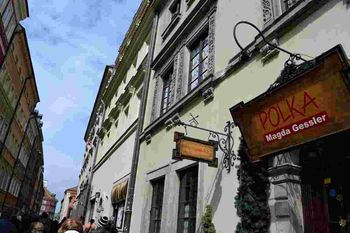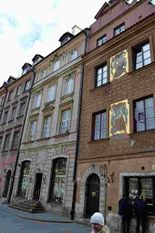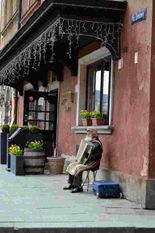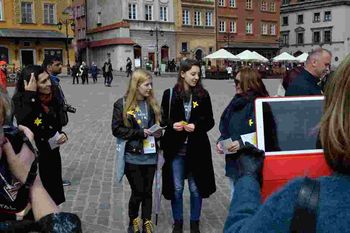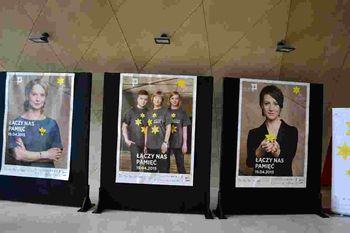Second day
|
On the next morning we started into our programme relatively late, because the delegations from Poland, Rumania and Greece picked us up at our hotel at about eleven (They had partly started at Opatow, the city our Polish hosts are from, which is about three and a half hours away by coach.) At 11.30 the official programme with all students and teachers started in the old city center of Warsaw, most of which had to be completely reconstructed and rebuild after the massive and mostly deliberate destructions caused by the Germans during the war. In the time after the war Warsaw has,grown into the modern capital with 1.2 million inhabitants that it is today, with few original buildings but a rich history. After a kosher lunch at the Restaurant of The Polin Museum of the Jewish People in Poland we had a guided tour through the core exhibition there, which allowed us a first grasp of the history that only few visible traces are left of at first sight. The museum shows in the long and interesting history of the Jewish people in Poland. Without underestimating the significance of the holocaust, the museum underlines the fact that this history is by no means only the history of the holocaust – of death and almost the end of Jewish life in Poland – but a history of life, of centuries of diverse and rich Jewish culture. Thus the visitors are taken on a journey from the immigration of Jews into Poland, over everyday life and religious aspects through the centuries, the relation between Christian and Jewish people and the difficult way of Jews in the re-emerging Polish state in the 20th century up to the holocaust and Jewish life in communist Poland. The museum is definitely worth visiting, and we soon found out that one would at least need a day to have enough time to see all aspects of the modern and interactive exhibition. After leaving the museum we got on the coach to Opatów, where the pupils met and went home with their Polish host families for the week after a long and tiring day. Nico Hofmann, Q11
|

